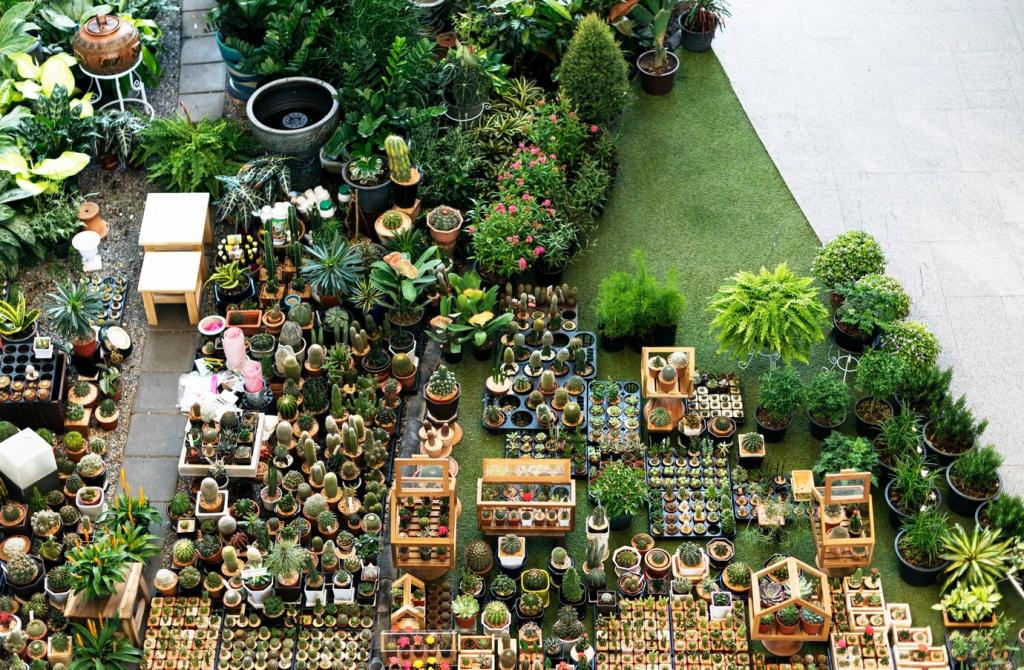
Creating Wildlife Habitats through Landscape Design
Chosen theme: Creating Wildlife Habitats through Landscape Design. Welcome to a friendly space where good design meets living ecosystems. Learn how to turn your yard, balcony, or shared green into a thriving sanctuary for birds, pollinators, and small creatures—while keeping it beautiful, resilient, and deeply personal.
Why Wildlife-Friendly Landscapes Matter
When we plant native species and add water, cover, and nesting sites, wildlife returns quickly. Monarchs find milkweed, chickadees hunt caterpillars, and bees sip from clustered blooms. Start small, stay curious, and tell us what species visit your garden first.
Wildlife gardens provide pest control, pollination, stormwater absorption, and healthier soils. A single chickadee pair may deliver thousands of caterpillars to nestlings. Your yard becomes an active contributor, not just a backdrop. Share before-and-after stories to encourage your neighbors.
After replacing lawn with a native meadow, we heard chorus frogs by midsummer and watched goldfinches harvest coneflower seeds in autumn. Those moments changed our routines and priorities. What first sign of return would thrill you? Comment and inspire someone new.
Design Principles for Wildlife Habitat Gardens
Aim for vertical complexity: canopy trees, understory trees, shrubs, tall perennials, groundcovers, and leaf litter. Each layer supports different species. Try serviceberry, viburnum, and goldenrod in succession. Post a photo of your layers and what wildlife each layer attracts.

Host Plants for Butterfly and Moth Larvae
Caterpillars need specific hosts: milkweeds for monarchs, oaks for hundreds of Lepidoptera species, asters and goldenrods for many generalists. Prioritize woody hosts with high insect value. Tell us your region and we will suggest a starter host list.

Berry and Nut Producers for Birds and Mammals
Serviceberry, elderberry, dogwood, winterberry holly, and oak acorns fuel migration and overwintering. Plant in clusters for visibility and abundance. Leave some fruit through winter. Comment with your top performers and which birds cleaned them out first.

Nectar and Pollen Powerhouses
Choose open, single flowers rich in nectar and pollen: beebalm, penstemon, mountain mint, asters, and goldenrod. Avoid sterile doubles. Plant drifts so bees spend less energy. Share photos of your busiest bloom and the pollinators it supports.


Water, Shelter, and Safe Passage
Use shallow basins with stones for perches, recirculating pumps for movement, and weekly cleanings. BTI mosquito dunks are wildlife-safe. Even a saucer refreshed daily can transform visitation patterns. Tell us what you added and who arrived first to drink.
Water, Shelter, and Safe Passage
Keep a safe standing snag if possible, layer brush piles for cover, and place nesting boxes at correct heights and orientations. Clean boxes annually. Subscribe for plans and seasonal reminders tailored to your region and favorite species.
Soil, Mulch, and Microhabitats
Feed the soil with compost, minimize disturbance, and avoid synthetic fertilizers that disrupt delicate relationships. Encourage mycorrhizae and test soil before amending. Share your soil wins, from richer scent of earth to thicker leaf litter life.

Soil, Mulch, and Microhabitats
Leaf litter protects ground beetles, firefly larvae, and overwintering butterflies. Use light layers and avoid volcano mulching around trunks. Let leaves rest under shrubs and trees. Join our community pledge to leave the leaves and post your observations.
Working with Your Neighborhood and Local Regulations

Share native plant cuttings, swap seeds, and offer quick tours. Habitat certifications help signal purpose. Host a small coffee walk at peak bloom. Comment with your outreach idea and we will feature the most creative next month.
Citizen Science and Simple Surveys
Join eBird, iNaturalist, or Bumble Bee Watch and log sightings weekly. Set gentle goals, like five new species per season. Share your project links in the comments so others can cheer and learn from your data.
Keeping a Habitat Journal
Track bloom times, nesting dates, rainfall, and first frost. Patterns emerge that guide plant choices and maintenance timing. We offer a free printable journal template—subscribe to receive it and start documenting your habitat’s unfolding story.
